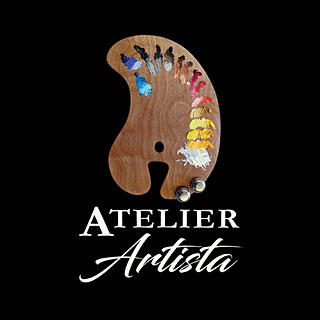Celebrating Rembrandt 350
- Brian 'Bunny' Batista
- Jun 16, 2019
- 4 min read
I’m away from the studio for the month of June, in the Netherlands to study great flemish paintings and the dutch golden age. Our Tuesday and Thursday night drop in sessions and Saturday MAKE and TAKE kids classes are still running. So if you have a multi-pass don't forget to use it!

I’m visiting the Netherlands because I need more Rembrandt in my life. What I gain from this personally directed education experience will be brought back to the studio. It just so happens that my I booked this trip to correspond to the Rembrandt 350 exhibition “All the Rembrandts” at the Rijksmuseum. This is the first time in history that the Rijksmuseum will showcase its entire collection of drawings, paintings and etchings. I got here just in time as it closed June 10, but it was an opportunity I just couldn't miss.
After all, Rembrandt is one of the greatest portrait painters of all time, his self portraits alone tell us the biographical story of the ravages of ageing in his time while we can trace his artistic development throughout. He is a master to be studied up close and personal. I needed to see first hand how he applied his paint, how he used chiaroscuro and of course revel in his truthful depictions as he was renown for his brutal honesty.
The first thing I did after arriving and unpacking is a visit to the Het Rembrandthius (Rembrandt house). Here, I saw a man living a lifestyle he couldn't afford which eventually led to him borrowing himself into a debt hole leading to him into bankruptcy. His opulent living space was gorgeous, he had a huge collection of plasters, artifacts and taxidermy for reference. A collection comparable to what only the wealthy would have at the time. I got to see his working studios and the areas he set up to teach his students. I stuck around for the printmaking and pigment making demos where I got to see the polished rock he mulled his pigments into paints.
Think back to a time before the tube was patented when artists still had to do make their oil paint themselves. It is something you should at least try before you die and it just so happens I booked Nick once more to offer this incredible introduction to the means and methods, class size is limited so sign up before its too late this may be the last opportunity to learn this from Nick before he moves overseas. https://www.atelierartista.com/special-events

When oil painting was first introduced, during the 15th century, Netherlandish artists painted large altar pieces on panel. They look way more amazing than their tempura or fresco counter parts from the same time. The oil is rich and highly chromatic. The persons depicted seem to be unique characterizations making them more real than idealized standards.
By the Dutch Golden age (the 17th century) artists are known for their portraiture as well as their still life floral paintings. These are some of my favourite genre of artworks. I love the charm and detail of these still lives. They used tiny little brushes and painted everything in incredible detail. At this time they led the world in botanical and scientific drawings. They combined many species of flower that bloom at different times by using references and studies. Every element being in detail made them seem unreal in so many ways because everything was in focus which is how our brain stitches things together as we look from subject to subject but thats not how we actually see. These works seem unreal and they would not have had complex arrangements in vases in homes like this. But what wonderful visuals for epic still life painting!
This golden era followed the Eight years war for Dutch independence. I think this new freedom coupled with the values the Dutch hold to be true had a large part in affecting artists to reinvent themselves and and how they apply their paint. Painters began to employ a freedom and looseness in their brush strokes. I think they started to paint more how we actually see. We feel Rembrandt’s gaze. They seem so far ahead than the work created by their predecessors. In some instances, if these 17 century works if they were taken out of context they could pass for contemporary.
I learned while at the Madurodam (The happiest war memorial highlighting the geography and heritage of the Netherlands in miniature models) its source may be at the very core of the Dutch mentality. During the formation of the Dutch democracy they put their values to paper: basically stating that their freedom allows them to think, do and say what they wish. I think this open, honest and loose approach affected the artists brushwork too. Its so well done it is clearly not willy nilly or lazy in any sense. Instead the approach seems direct, deliberate, effective and sincere.

I was told that the dutch may come across as curt with they straight to the point directness. So too are the marks that their masters make. As far as I’ve experienced during this visit, the dutch are friendly, forthright while being incredibly chill. If nothing else, I hope to bring a little more of this attitude back with me to help improve our work in the Atelier.
Next the pursuit of other Dutch masters: Vermeer, Pieter Brueghel the Elder, Jan Steen, Hieronymus Bosch, Lucas van Leyden, Frans Hals, Hendrick Terbrugghen, Willem Kalf, Rachel Ruysch and more!



























































































Comments